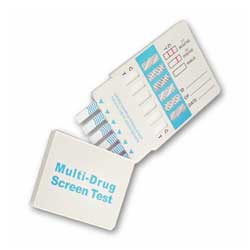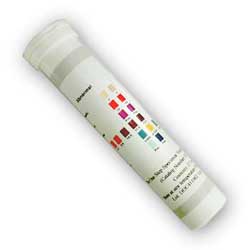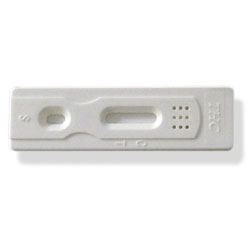UrineCheck 6 is based on detection methods that can identify the presence of additives, adulterants and masking agents that are added to urine.
UrineCheck 6 Drug Adulteration Test Strip:
Creatinine: Testing for sample dilution. In this assay, creatinine reacts with a creatinine indicator under alkaline conditions to form a purplish-brown color complex. The concentration of creatinine is directly proportional to the color intensity of the test pad.
Glutaraldehyde: Testing for the presence of exogenous aldehyde. In this assay, the aldehyde group on the glutaraldehyde reacts with an indicator to form a pink color complex.
Nitrite: Testing for the presence of exogenous nitrite. Nitrite reacts with an aromatic amine to form a diazonium compound in an acid medium. The diazonium compound, in turn, couples with an indicator to produce a pink-red color
Oxidants: Testing for the presence of oxidizing reagents. In this reaction, a color indicator reacts with oxidants such as bleach, hydrogen peroxide or pyridinium chlorochromate to form a blue color complex. Other colors may indicate the presence of other oxidants.
pH: Testing for the presence of acidic or alkaline adulterant. This test is based on the well-known double pH indicator method that gives distinguishable colors over a wide pH range. The colors range from orange (low pH) to yellow and green to blue (high pH).
Specific Gravity: Testing for sample dilution. This test is based on the apparent pKa change of certain pretreated polyelectrolytes in relation to the ionic concentration. In the presence of an indicator, the colors range from dark blue or blue-green in urine of low ionic concentration to green and yellow in urine of higher ionic concentration









